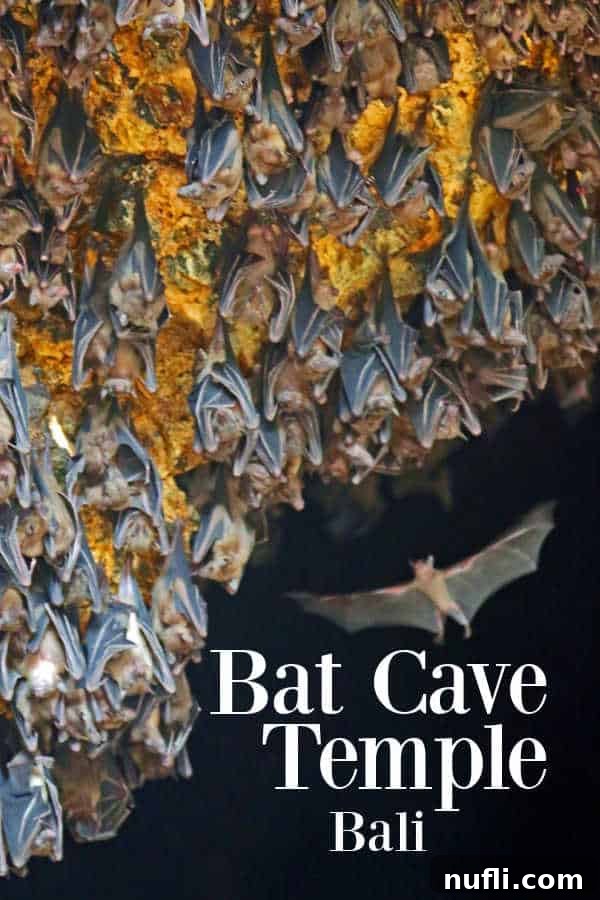Prepare yourself for an extraordinary journey to one of Bali’s most enigmatic and sacred sites: The Bat Cave Temple, locally known as Goa Lawah. Before my first visit, like many, I pictured a serene temple adorned with symbolic bat carvings and statues. Little did I know, the reality was far more immersive and utterly fascinating – a profound spiritual sanctuary where thousands upon thousands of live bats inhabit a mystical cave, seamlessly integrated into Balinese Hindu worship. It’s an experience that truly transcends expectations, blending ancient traditions with a raw connection to nature.
Stepping into the grounds of Goa Lawah is to step into a realm where the sacred and the wild coexist. The air hums with the soft chirping and rustling of its winged residents, creating an atmosphere that is both awe-inspiring and slightly eerie. This isn’t just a temple; it’s a living, breathing testament to Bali’s unique spiritual landscape. My visit was a profound reminder of the island’s capacity to surprise and captivate, offering a glimpse into rituals that have been performed for centuries.
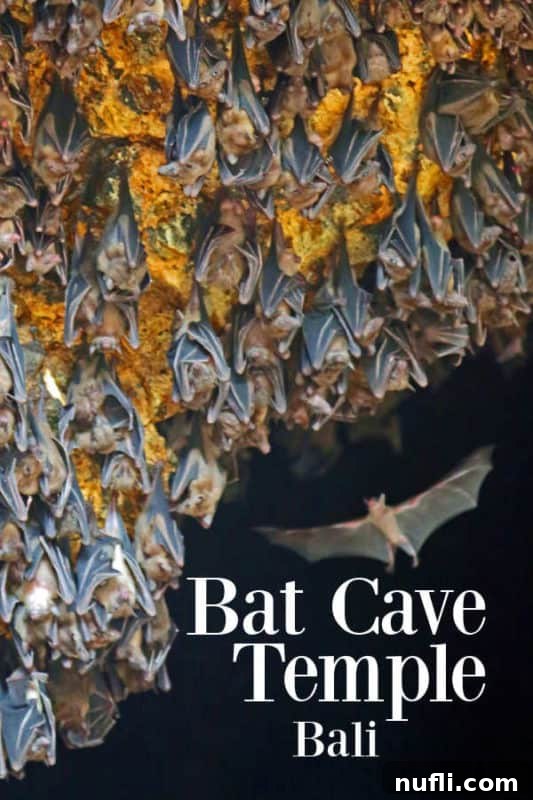
TL;DR Don’t have time to read the full article? Here are my top finds:
🏨Hotels and Vacation Rentals
📍Tours
Goa Lawah Temple: Bali’s Sacred Bat Cave Sanctuary
The Bat Cave Temple, or Pura Goa Lawah, holds immense religious significance for the Balinese Hindu community. Located on the eastern coast of Bali, it is one of the island’s most important Kahyangan Jagat (directional temples), protecting Bali from negative influences. The temple is believed to have been established in the 11th century by Mpu Kuturan, one of the revered Hindu priests who laid the foundations of Balinese Hinduism. The cave itself is considered sacred, a powerful natural feature revered as a dwelling place for the god Shiva and a meditation site for ancient sages. Legend has it that the cave extends deep within the earth, possibly even connecting to Mount Agung, Bali’s most sacred volcano, and is home to Naga Basuki, a mythical dragon-like creature guarding the earth’s balance.
An Unforgettable Encounter with Nature’s Mysticism
My firsthand experience at Goa Lawah was truly something else – a fascinating blend of awe and wonder, mixed with a touch of the uncanny. As we approached the main entrance, the sheer volume of bats became apparent, clinging to the cave’s ceiling like a living, breathing tapestry. Despite the thousands of creatures, they remained peacefully within the cave’s depths during our entire visit, a reassuring sight for first-time visitors.
One of the most common concerns people have about a bat cave is the smell. I’d braced myself for an overwhelming odor, but I was pleasantly surprised. While there was a faint, earthy scent, it was far from unpleasant or strong, certainly not enough to detract from the experience. The gentle breezes from the ocean, just a stone’s throw away, seemed to carry away any lingering staleness, allowing the spiritual ambiance to truly shine through. The atmosphere was incredibly cool and damp, a welcome respite from the Balinese heat, and the soundscape was dominated by the mesmerizing chorus of bats, punctuated by the rhythmic chanting from temple ceremonies.
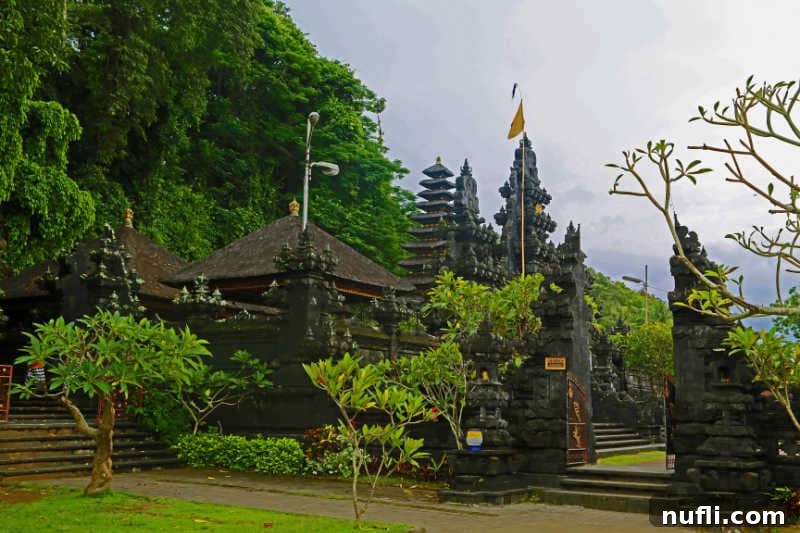
The Temple Complex: A Harmony of Stone and Spirit
Beyond the captivating bat cave itself, the Goa Lawah complex is a magnificent display of traditional Balinese architecture and artistry. The temple grounds are meticulously maintained, featuring intricately carved stone gateways (Candi Bentar), shrines, and pavilions, all set against a backdrop of lush tropical greenery. Every detail tells a story, from the weathered stone statues guarding the entrances to the delicate offerings placed by devotees. The craftsmanship is breathtaking, a testament to the enduring artistic traditions of Bali.
During my exploration, I discovered many hidden gems. One particular delight was only noticed later, when reviewing my photographs: a beautifully intricate golden bat sculpture positioned subtly above one of the temple’s ornate doorways. It was a charming detail that perfectly encapsulates the temple’s unique identity, a subtle nod to its most famous residents, blending artistic elegance with natural symbolism. Such unexpected discoveries add layers of richness to the visit, revealing the deeper connections between nature, art, and spirituality that are so prevalent in Balinese culture.

The main temple area, with its multiple shrines and open courtyards, provides a serene space for prayer and reflection. Offerings of colorful flowers, incense, and fruit are laid out daily, creating a vibrant sensory experience that highlights the living nature of Balinese Hinduism. The air is often filled with the gentle scent of burning incense and the soft murmurs of prayers, inviting visitors to observe and appreciate the deep devotion of the local people.
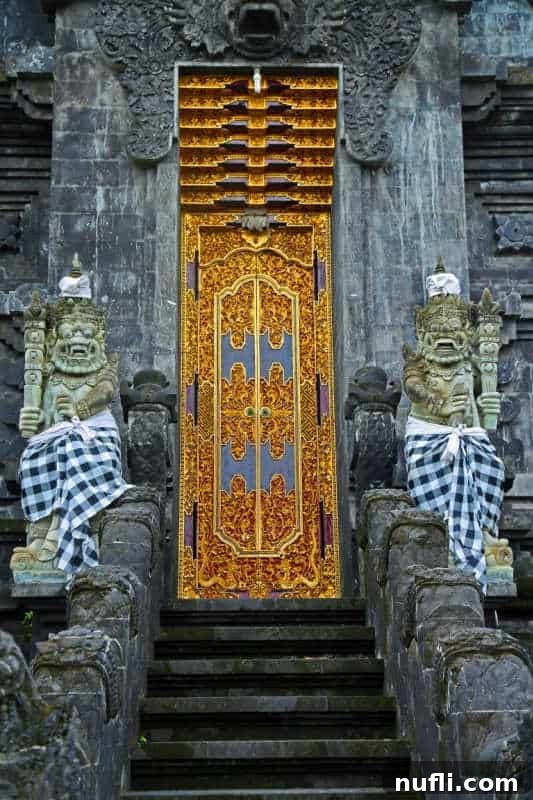
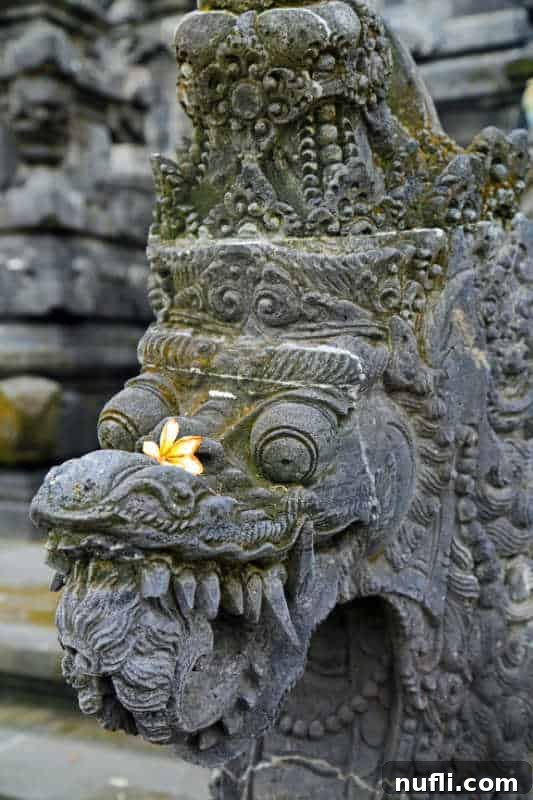
Planning Your Visit to Goa Lawah Temple
A visit to Goa Lawah is an absolute must for anyone exploring the eastern part of Bali. To ensure a respectful and enriching experience, here are a few essential tips:
- Dress Code: Like all Balinese temples, a respectful dress code is required. This means covering your shoulders and knees. Sarongs and sashes are readily available for rent or purchase at the front entrance, making it easy for spontaneous visitors to comply.
- Best Time to Visit: Early mornings or late afternoons are ideal. During these times, the light is softer, and the temple tends to be less crowded. Furthermore, observing the bats at dusk as they emerge from the cave for their nightly hunt is a spectacular sight, though keep in mind ceremonies might be ongoing.
- Entrance Fee: There is a modest entrance fee, which contributes to the temple’s maintenance and preservation.
- Respectful Conduct: Remember that Goa Lawah is an active place of worship. Speak softly, avoid pointing your feet towards shrines, and do not use flash photography inside the cave itself, as it can disturb the bats.
- Location: The temple is situated in Pesinggahan village, Dawan district, Klungkung regency, approximately 10 kilometers east of Semarapura and 50 kilometers east of Denpasar. It’s easily accessible by car or scooter and is often included in East Bali tours.
During my visit, we were approached by a shopkeeper who offered us complimentary necklaces. While it was a kind gesture, it’s worth noting that sometimes these free gifts can be an attempt to encourage you to visit their shop later. Our guide simply placed it in his car without comment, leaving us unsure of its true intention, but it’s part of the unique interactions you might encounter.
Beyond the Bats: Exploring East Bali
The region surrounding Goa Lawah is rich with cultural and natural wonders, making it perfect for a full day of exploration. Consider combining your visit to the Bat Cave Temple with these nearby attractions:
- Candidasa: A charming coastal town known for its relaxed atmosphere, beautiful beaches, and excellent snorkeling and diving opportunities.
- Tenganan Pegringsingan Village: One of Bali’s oldest and most traditional villages, home to the indigenous Bali Aga people. It offers a fascinating glimpse into ancient Balinese culture and unique textile traditions like “Geringsing” weaving.
- Tirta Gangga Water Palace: A stunning former royal palace known for its elaborate bathing pools, ornate statues, and lush gardens, providing fantastic photo opportunities.
- Ujung Water Palace (Taman Ujung Sukasada): Another magnificent water palace boasting a blend of Balinese and European architecture, surrounded by expansive pools and picturesque gardens.
- Padangbai: A bustling port town, but also a gateway to stunning white sand beaches like Blue Lagoon and Bias Tugel, perfect for swimming and snorkeling.
For those venturing deeper into the island, make sure to consult our comprehensive Bali Travel Tips to enhance your journey. And no trip to Bali is complete without a visit to the enchanting Sacred Monkey Forest Sanctuary in Ubud, another incredible intersection of nature and spirituality.
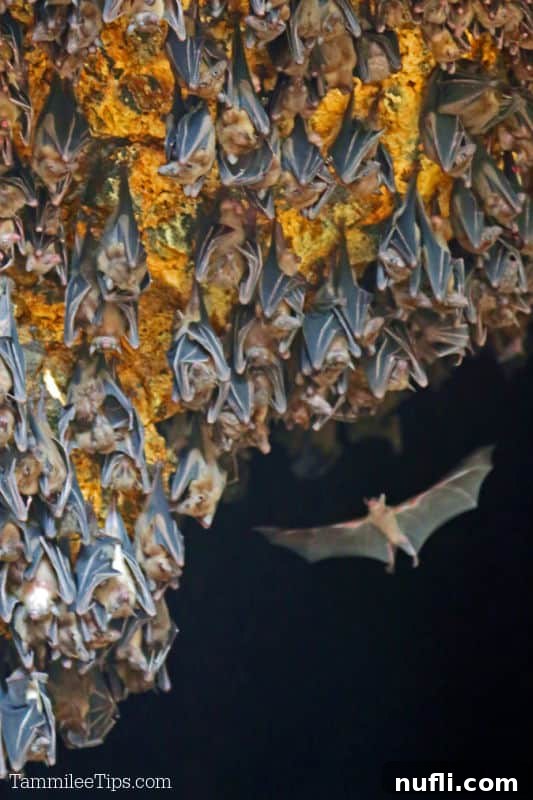
Conclusion: A Balinese Adventure You Won’t Forget
Goa Lawah Temple truly stands out as a unique and essential Balinese experience. It’s a place where the spiritual world beautifully merges with the raw power of nature, offering visitors a profound sense of wonder and connection. From the thousands of sacred bats to the intricate temple architecture and the vibrant cultural ceremonies, every aspect of Pura Goa Lawah leaves a lasting impression. It’s more than just a tourist attraction; it’s a journey into the heart of Bali’s spiritual heritage, promising memories that will last a lifetime.
Additional Bali Travel Articles to Inspire Your Trip
To help you plan the ultimate Balinese adventure, explore these related guides:
Maximizing Your Bali Adventure with Groupon Deals
Experience the Mystical Barong and Kris Dance Show in Bali
Discovering Artistry at a Bali Batik Factory
The Serenity of Saraswati Temple in Ubud
For even more insights and recommendations, delve into our complete Bali Travel Guide. Happy travels!
